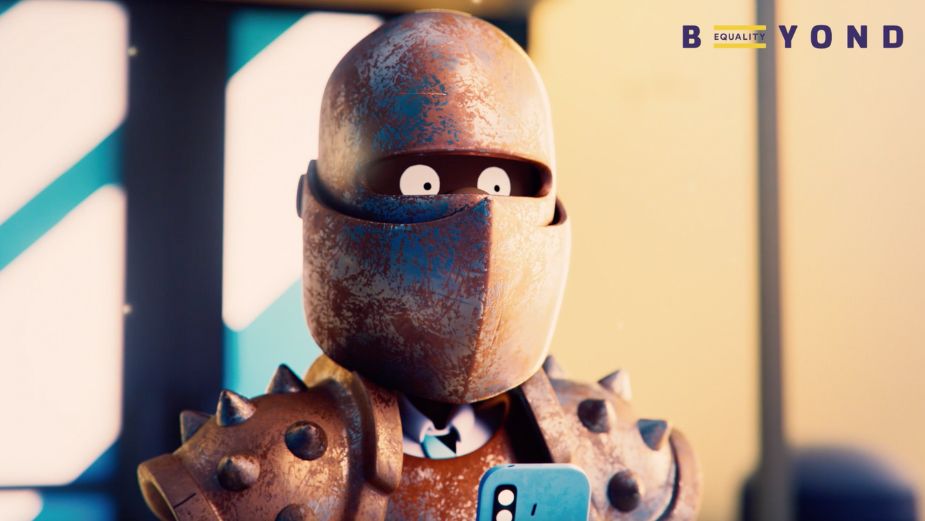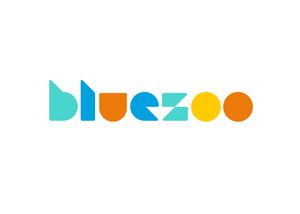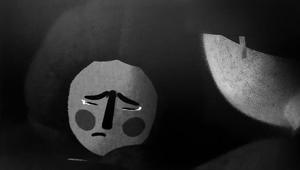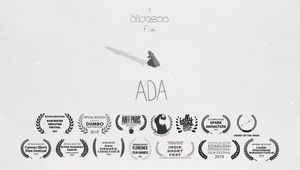
Why Beyond Equality Want You to Take Off Your ‘Armour'

Following the crowd can have detrimental effects. Often, it’s in these moments that unacceptable behaviours can seem acceptable, and continue when they really should be put to a stop. In the short film ‘Armour’ created by charity Beyond Equality, in collaboration with Blue Zoo Animation, the audience gets to see just how harmful it is to build up a persona that goes against what’s right.
This animated short follows a teenage boy, James, as he navigates through school life. During several moments that force a reaction, he often conforms to his peers and engages in unacceptable behaviour, further building up both his physical and metaphorical armour. As James begins to treat the girls around him unfairly and exhibits toxic behaviours, the unequal principles between boys and girls – men and women – are amplified. As the protagonist gets increasingly uncomfortable, rejects these behaviours and betters himself, his armour falls away, leaving his true self behind.
Taking LBB’s Nisna Mahtani through the campaign are Blue Zoo’s storyboard artist and director Alex Davy and Beyond Equality’s managing director Daniel Guinness, who share the process of creating the spot.
LBB> What does Beyond Equality stand for and what did you want to convey in this campaign?
Daniel> Beyond Equality believes that by opening up space for men and boys to reflect on how they’ve been socialised and what pressures they feel to conform, we can give them a chance not only to free themselves but also to shift our cultural norms and stereotypes, in ways that move towards healthier relationships with themselves and those around them. We stand for building safer, more supportive and inclusive societies.
LBB> The film is named ‘Armour’, did you begin with the title and then craft the animation around this, or vice versa?
Alex> The working title was actually ‘Rust’, but it changed during production to ‘Armour’. The idea was always going to centre around a metaphorical armour that young men and boys have forced upon them as they grow up. The armour is rusty to show that this isn't something cool, or something you’d want on you for protection. Instead, it's rusty, painful, old-fashioned, scratchy and stops you from moving and seeing, and really being who you want to be.
LBB> Can you talk us through the storyline, what inspired it and why was it so important to share?
Alex> The story was quite a simple one. After listening to some talks by Ben Hurst at Beyond Equality, I was really taken by the idea of the man-box, and this armour that people, young men especially, have around them, that forces them to act and speak a certain way about women. It’s something that happens slowly, and is not a conscious or malicious thing. I also have always been interested in the idea of exoskeletons. Beetles, for example, are extremely strong, but they can never grow beyond a certain size or they’d collapse under their own ‘armour’ - and what actually is the key to being strong and growing to a huge size is a solid backbone. Cheesy, but it’s always stuck with me!
Daniel> The storyline for us is of someone falling into a place in their life where they’re holding themselves back and hurting people around them. We see the main character become so interested in fitting in with his mates that he stops trying at school and starts playing up to the jokes and objectification of the girls in his class. For us, it’s always important to come to these conversations with compassion, even as we want to show how damaging the outcomes can be, and so we wanted a storyline that featured the emotional journey and a moment of reflection and opening up - that’s the type of bravery that’s stronger than armour!

LBB> Why was it important to represent armour in a literal way? What impact did it have on the storytelling aspect of the spot?
Daniel> I loved the clunkiness of the armour, its weight and the way it was forcibly jammed on by the group of friends as they made their comments and jokes. That just gave the whole situation this layer of realness - you could see and hopefully feel how it’s having this negative impact.
Alex> We did actually play around with the idea of the armour being truly metaphorical, or perhaps something that only the protagonist could see, we also wondered how much the characters should interact with it, but I think we landed nicely as it ‘pops’ into place without seeming like something magical from a fairy tale. There were some lovely smoke effects rendered onto the final edits whenever the armour popped in that emphasised the dusty rustiness of it all. It’s also a nice touch at the end where a friend physically places a piece of armour back on the protagonist as if to say ‘Shake it off mate, put your guard back up!’
LBB> And what was the process behind creating the armour? Did you always know it was going to be characterised by a rusted nature or were there different variations you went through before you landed on this one?
Alex> It was always going to be rusty yes, seeing as the original title of the film was ‘Rust’ - Armour can be seen as something you want, or something useful or cool looking, but for this film, it was very important that the armour looked clunky, uncomfortable and not something you’d want to wear at all. Logistics-wise, the 3D models were rendered shiny and metallic first, then scuffed up bit by bit.
Also, it warrants some interesting discussions in schools, when something is rusty it can appear strong, but is actually brittle and easily corroded, so I could imagine a group of teenagers discussing this and coming to their own realisation that the armour they put up can be dismantled and broken away if they want it to.
Daniel> For us, the rustiness is a Blue Zoo innovation - and one that really works for us and the messages. It’s a wonderful side-product of this collaboration between educators and communicators that’s given us a new way of thinking and talking about the topic (as well as an incredible video).
LBB> Let’s also talk about the animation style, in which the characters are the focus and the background is almost blurred, to draw attention to certain moments or emotions. Is this a style you’ve used before and what unique challenges does it pose?
Alex> Yes, this film is definitely character-driven, the background didn’t hold that much importance, but we still wanted it to be distinctive looking. It was nice that an initial colour play I sketched way back at the start of the idea got carried through to the final film, the unnatural yellow and blue environment made the film stand out from other colourways Blue Zoo had done previously, and personally I'm always a fan of reduced colour palettes!
Blue Zoo have some fantastic character animators so it was always really great to see the animators hit the emotional points of the film with relative ease.

LBB> Crucially, there’s no narration or dialogue in the piece. Why did you choose to let the visuals tell the story and what elements were you mindful to include?
Alex> Well, honestly timescales played a part! Lip sync in a short film can double your workload, and we didn't want to push the team to the point of it being a slog rather than something fun. I knew Blue Zoo had created a few short films previously that worked really well as a visual story so there was never any doubt we could make it work. Also, in terms of how people share and watch content these days, a lot of the time it’s on the move, you’re not always in the position to sit and listen to a piece of dialogue.
Daniel> From our perspective, the simplicity of the narrative really matches the big parts of our work. We want to spend most of our time getting people to reflect on their own lives and experiences, instead of lecturing people without knowing what they’re going through. This style opens up a similar space.
LBB> What have the reactions to the campaign been like so far? Have you heard or seen any surprising ones?
Alex> Good I hope! Beyond Equality seemed to really like it, which is the most important thing, as they were our anchor throughout the production to let us know if we were still on the right track. The demographic had to appeal to teenage boys first and foremost, and that was always something I was conscious of for the entire production. It was also really important that the message not be preachy, because who likes to be told what to do?
Daniel> We are very happy that it has been well received! We got a message the other day from a boy saying that the classroom scene really resonated with them and their experience. We hope that people can see Armour with a positive outlook and inspire them to have those challenging conversations.
LBB> Would you like to share anything else about the spot?
Alex> Just to keep a lookout for the fantastic work Beyond Equality are doing!
Daniel> Similarly, keep a look out for the amazing work Blue Zoo puts out! If you want to know more about us, support our work and/or volunteer please find us at www.beyondequality.org













